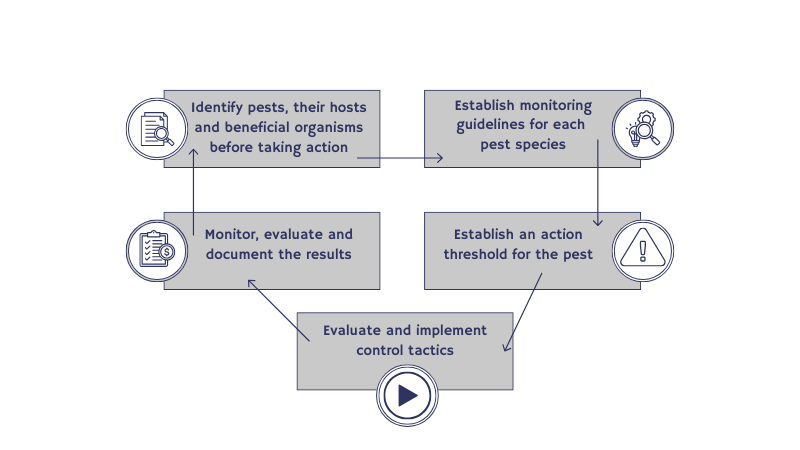What is IPM?
Integrated Pest Management (IPM) is a long-term management strategy that uses a combination of tactics to reduce pests to tolerable levels with potentially lower costs for the pest manager and minimal effect on the environment. The principles of IPM include:

IPM can be applied when managing all kinds of pests, including insects, weeds, diseases and vertebrate pests, such as ground squirrels and pigeons.
It integrates prevention, cultural practices, mechanical and/or physical pest controls, biological pest controls and chemical pest controls to prevent and suppress pests. The goal of IPM is to reduce the adverse impacts of pest control on human health, the environment and non-target organisms, while managing pests effectively.

The concept of Integrated Pest Management is not new and has been used on field crops and orchards throughout the world.
Applying Integrated Pest Management in urban environments, including home gardens, landscapes and golf courses, presents special challenges. Urban IPM, or pest management programs that incorporate reduced use of pesticides in private and commercial landscapes, golf courses and other urban landscape settings, is a rapidly expanding field that incorporates university and industry research.
Do you have a pest problem? Whether you need help identifying plants, insects, or more, view our
Pest Solutions page for more resources.


